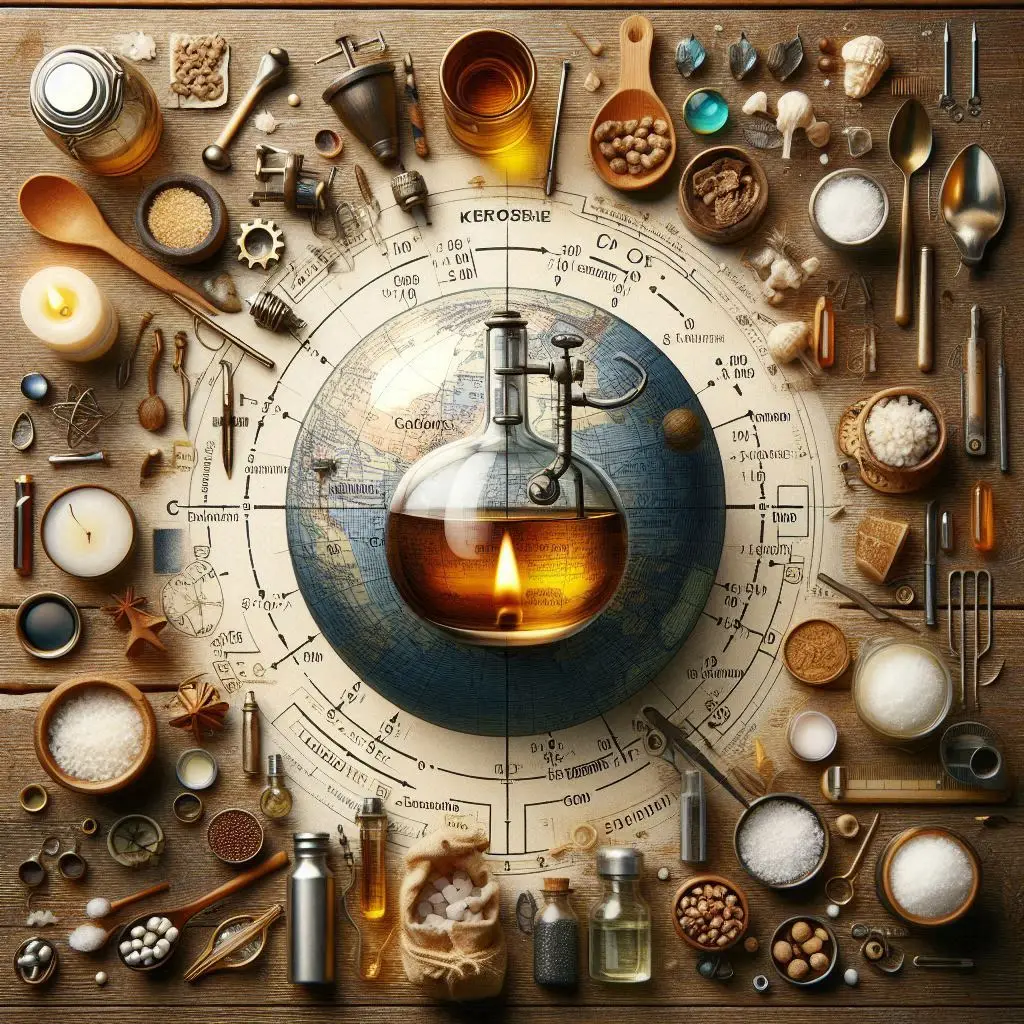
Kerosene boiling point
In this comprehensive exploration, I will talk about kerosene's boiling point, its relevance, causes impacting it, and its varied applications.
Kerosene, sometimes referred to as paraffin oil in certain countries, is an essential hydrocarbon-based liquid fuel. It plays an important part in several sectors, especially as a fuel for aircraft, heating, and lighting. One of the key factors that determine kerosene's value is its boiling point, which impacts its combustion characteristics, storage, and safety.
Kerosene's boiling point is a basic feature that substantially determines its uses, safety, and performance. It is a flexible hydrocarbon-based liquid fuel with a boiling point generally ranging from 150 to 300 degrees Celsius. Understanding the boiling point of kerosene is vital for maximizing its usage in different sectors, including aviation, heating, lighting, and more.
The relevance of kerosene's boiling point becomes obvious in its combustion properties, storage needs, and specialized uses. Factors such as carbon chain length, contaminants, refining procedures, and grade criteria may all effect the boiling point of kerosene, making it a customizable fuel for varied uses.
As technology progresses and environmental concerns rise, the exact regulation of kerosene's boiling point continues to be a focus of research and development. Innovations in refining and manufacturing methods attempt to boost the performance and efficiency of kerosene-based fuels while limiting their environmental effect. In an ever-evolving energy market, kerosene's boiling point remains a vital criterion for influencing its future uses and sustainability.
Kerosene and Its Makeup
An intermediate hydrocarbon between gasoline and diesel fuel, kerosene is a hydrocarbon distillate. Alkanes, which are saturated hydrocarbons made of carbon and hydrogen atoms, make up the majority of its chemical makeup. These alkanes may have varying carbon chains, resulting in various classes of kerosene with various boiling points.
Kerosene's Boiling Point
The temperature at which a material transforms from a liquid to a vapor at a certain atmospheric pressure is known as the boiling point of a substance. Kerosene generally has a boiling point between 150 and 300 degrees Celsius (302- and 572-degrees Fahrenheit). The precise quality and composition of kerosene may alter this range, however.
Meaning of the Boiling Point
Kerosene's boiling point is a crucial factor that affects its many uses. Its importance must be understood to ensure safe handling, storage, and combustion.
Kerosene's combustion characteristics are influenced by its boiling point. Kerosene must be heated beyond its boiling point in order to ignite when it is heated and evaporated in heaters or engines. The ignition temperature, flame temperature, and combustion efficiency of a given grade of kerosene are all influenced by its specific boiling point. Higher boiling points may cause a slower, less complete combustion, which would decrease energy efficiency and cause soot to accumulate.
The boiling point of kerosene is also very important for storage and handling. Kerosene is a flammable liquid, therefore knowing its boiling point is important for choosing the right pressure and temperature for storage. It makes sure that kerosene is kept liquid in storage tanks and other containers, avoiding evaporation and other fire risks.
Kerosene is utilized as Jet-A fuel or aircraft turbine fuel (ATF) in the aviation industry. The boiling point of kerosene is carefully regulated to ensure that jet engines run at their best within a certain temperature range. The steady boiling point of high-quality ATF enables jet engines to run well over a range of temperatures and altitudes.
Kerosene Boiling Point Influences
The following variables may affect kerosene's boiling point:
Kerosene's boiling point is influenced by the hydrocarbon molecules' carbon chains, which range in length. Higher boiling temperatures are often the consequence of longer carbon chains since it takes more energy to dismantle the intermolecular interactions binding the molecules together.
Impurities: Impurities may change the boiling point of kerosene, including sulfur compounds and aromatics. Depending on their kind and concentration, contaminants may cause the boiling point to rise or fall.
Kerosene's boiling point may be affected by the refining procedure used to get it from crude oil. Kerosene's boiling point may be customized by refineries by modifying the distillation conditions and eliminating unwanted ingredients.
Grade and Use: Different classes of kerosene are created for certain uses, and their boiling points are modified in accordance with those needs. To maintain maximum performance in jet engines, aviation kerosene (Jet-A), for instance, has a precisely managed boiling point.
The uses of kerosene:
Due to its special qualities and mild boiling point, kerosene is used in a variety of sectors. The following are some of the main applications:
Aviation: Kerosene is used as aviation turbine fuel (ATF) for jet engines, as was before noted. It is the best fuel for aircraft because of its steady combustion properties and relatively high energy content.
Heating: In both home and commercial contexts, kerosene is often used for space heating. In cold weather, kerosene heaters are effective and a dependable source of heat.
illumination: Kerosene lamps have long been a popular choice for both indoor and outdoor illumination. Kerosene lamps are still used in places where there is insufficient access to electricity, despite the fact that electric illumination has mostly supplanted them in developed areas.
Kerosene burners are utilized for cooking in various regions of the globe when alternative energy sources are limited or costly.
Diesel Fuel Blend: To enhance diesel fuel's performance in cold weather, kerosene is sometimes added. Kerosene enhances the fuel's flow at low temperatures and decreases the cloud point of the fuel.

